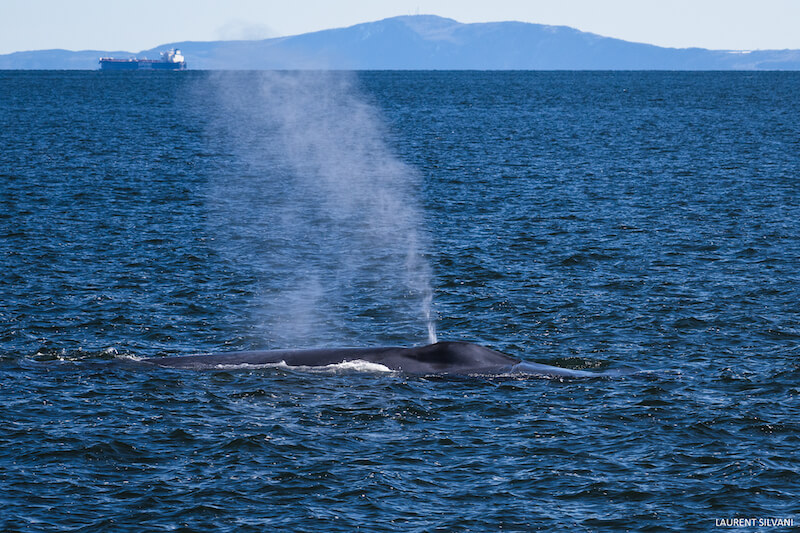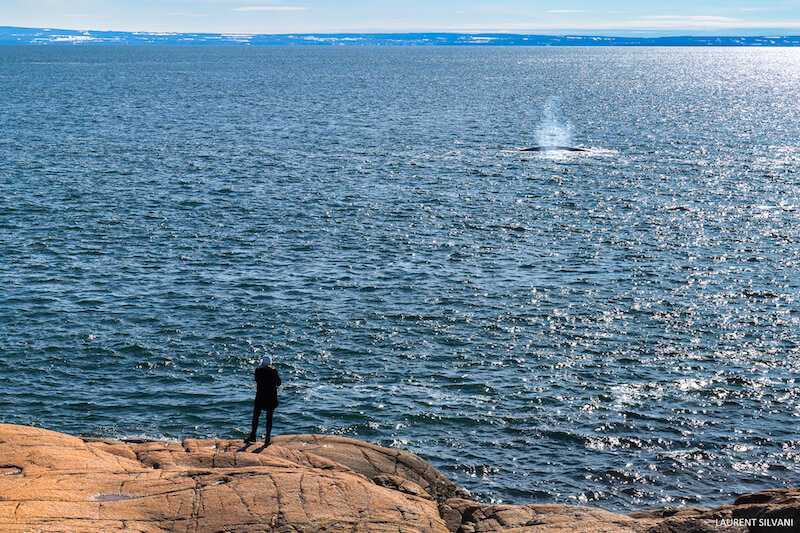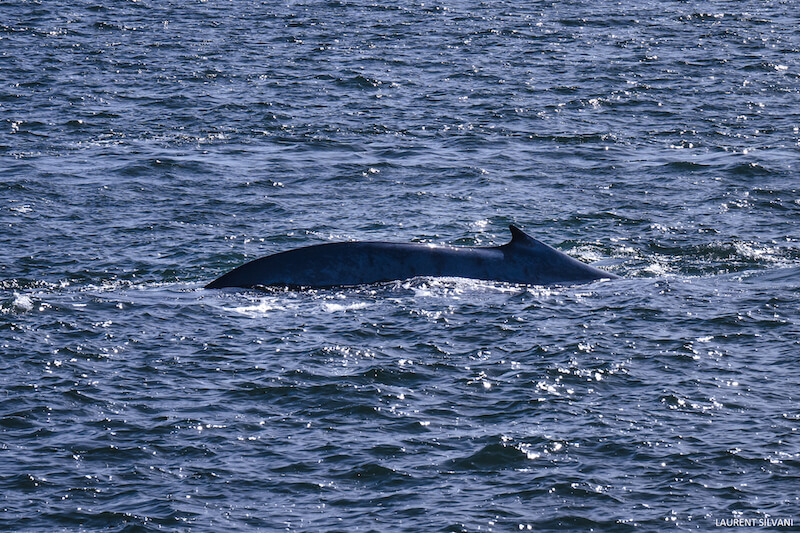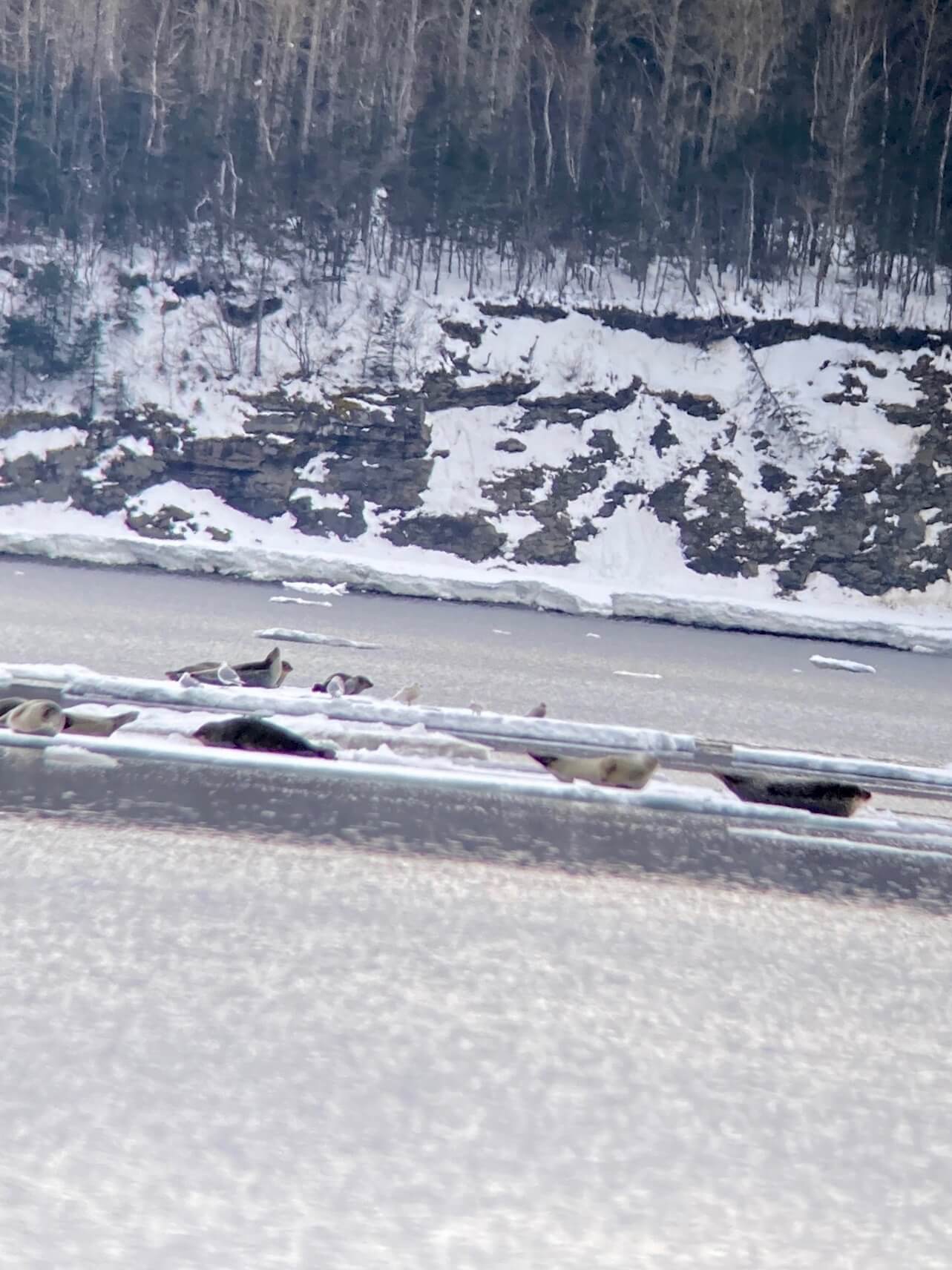“Seeing them breath when it’s cold is even more impressive! When we talk about 10 metres high, it’s really 10 metres, and it’s really high!” When describing his blue whale sighting, this Côte-Nord resident comes across as amazed, and for good reason: it was when he arrived by chance near the shore in Les Escoumins that he was taken aback by the largest living animal on Earth.
These huge cetaceans have been seen regularly in recent weeks, but the sighting that has just taken place is particularly remarkable. One blue whale was also photographed near Godbout, four were seen swimming near Franquelin, not to mention an incursion by two individuals to Les Escoumins. But that’s not all! There are also reports of belugas, minke whales, seals and even a humpback.
Encounters with blue whales – In Les Escoumins
A photographer passing through Les Escoumins received quite a surprise near his accommodations! He certainly didn’t expect to make such an exceptional observation from dry land, especially this time of year. “We were lucky enough to see a beautiful blue whale very close to the shore. […] What’s more, she put on a stunning display by showing her caudal fin (tail), as well as the base of her head and pectoral fin.” Indeed, this is what we could call a stroke of luck!
Local residents also spontaneously came to admire the animal. A naturalist and wildlife photographer describes the scene: “This individual was feeding along a current bar close to the surface. Behaviours that we sometimes perceive as flashy often have much more practical uses for the animal, such as feeding. In no way does this make them any less impressive, however! “It’s was slowly diving for just a few minutes (between 2 to 5!) at a time, which allowed us to observe and admire it repeatedly for almost two hours.” A little later, while scanning the open sea with his binoculars, he also spots another blue whale offshore breathing and even showing its tail when diving.
Encounters with blue whales – In Franquelin
“I’m stunned! Whales were blowing everywhere; it was awesome. […] There must be a lot of krill because they’re actively feeding.” On March 20, in what might be described as an entire anthology of blue whales, four speckled bluish-grey backs roamed simultaneously near the shores of Franquelin. After seeing their spouts, a marine mammal enthusiast alerts a keen observer of their presence. These cetaceans remained in the area for a good while. Earlier in the week, on March 17 and 19, folks in Quebec’s Côte-Nord region were also able to admire blue whales: “Sustained surface feeding sequences in the same area for hours on end. For a while, it was close enough to shore to fully appreciate the power of its breathing. A second spout was also observed far offshore.” A resident of Godbout also reports the presence of large rorquals.
Seals, belugas and minkes
A group of eight belugas was spotted by a resident in front of his home in Pointe-aux-Outardes. Near Les Escoumins, it’s mostly solitary individuals that are seen from time to time.
As far as pinnipeds go, a few harbour seals were observed hanging out on their favourite rocks. In Gallix, one observer noticed four harp seals when she stepped out onto her balcony. “Each one was floating on its own little chunk of ice. There was one that I was able to film when the waves brought it quite close to shore.” Near the town of Gaspé, there were reports of numbers of harp seals basking on the ice.
In Grande-Vallée, “I can confirm that whales were rare on this side of the gulf until this morning, when we spotted two or three minkes heading toward Tadoussac. Let’s hope this continues,” reports one observer.
Whether it’s just a stroke of good fortune or by word of mouth from one’s network of contacts, observing a marine mammal is always exciting!
Thanks to all our collaborators!
Special thanks go out to all our observers who share their love for marine mammals with us! Your encounters with cetaceans and pinnipeds are always a pleasure to read and discover.
On the water or from shore, it is your eyes that give life to this column.
Patrice Corbeil
Ginette Cormier
Laetitia Desbordes
Emmanuel Hains
Diane Ostiguy
Renaud Pintiaux
Pascal Pitre
Laurent Silvani
Andréanne Sylvain
Alexandre Terrigeol
Marielle Vanasse
Michele Van de Kaa
J. Varin
Et à tous les autres!
Merci aussi aux équipes qui partagent leurs observations :
Station de recherche des Îles Mingan (MICS)
Réseau d’observation des mammifères marins (ROMM)
Réseau québécois d’urgence pour les mammifères marins (RQUMM)
Groupe de recherche et d’éducation sur les mammifères marins (GREMM)
And all those we left out!
Additionally, we would like to acknowledge the following teams for also sharing their sightings:
Mingan Island Cetacean Study (MICS)
Marine Mammal Observation Network (ROMM)
Quebec Marine Mammal Emergency Response Network: Status Report (QMMERN)
Group for Research and Education on Marine Mammals (GREMM)
Would you also like to share your observations?
Have you seen any marine mammals in the St. Lawrence? Whether it’s a spout offshore or just a couple of seals, drop us a line and send your photos to [email protected]!









